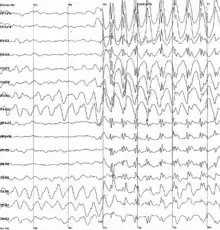Lots of good answers here already but nobody seems to have mentioned the interesting case of Transcranial Magnetic Simulation (TMS) which provides a direct answer to the original questions.
Since nerve signals are partially transmitted by electrical currents, they both create and can be manipulated by the right electromagnetic fields. As the summary of the Encyclopedia of Neuroscience entry says:
TMS represents a noninvasive method to induce electrical currents within the brain that in turn can be used to transiently disrupt the function of a targeted brain area, functionally map cortical areas, assess cortical excitability, and modulate cortical activity. TMS is being widely used to investigate complex facets of the human brain, including sensory and motor function as well as cognition.
So the answer to the question is yes organisms do have EM fields and, yes, they can be influenced by external fields (though it takes a very focussed and specific field to cause anything of note). The idea that crystal healing might make a difference is not rendered more plausible by this observation.

